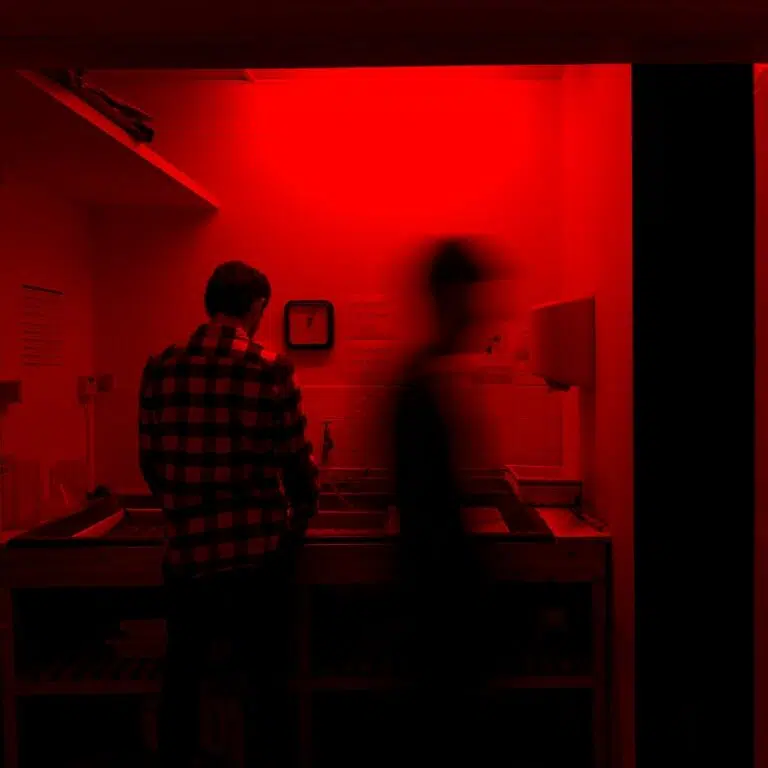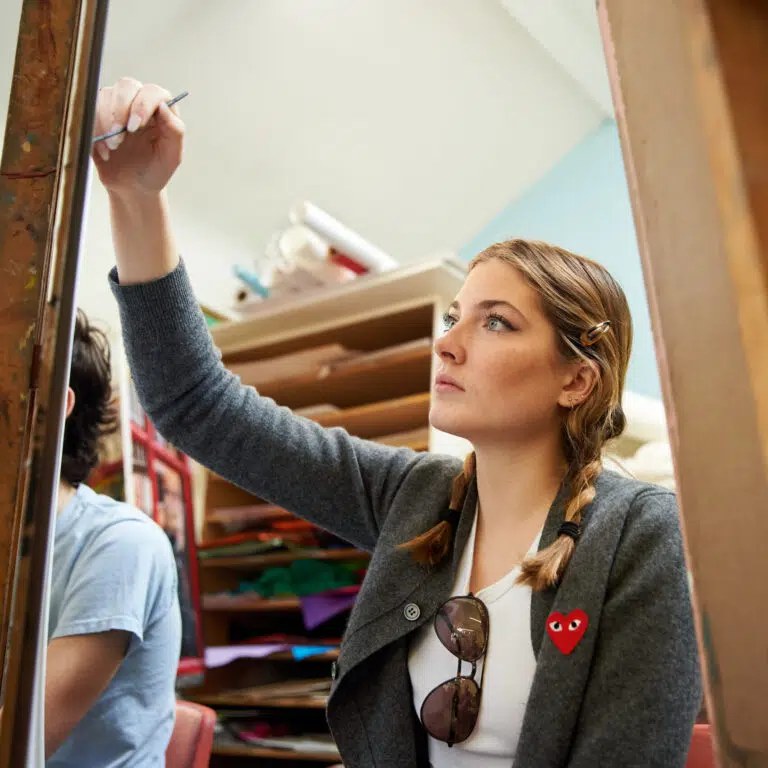Photography is one of the most important and influential means of communication in the world today and is highly significant within the creative arts. Photography combines both creative and intellectual skills and allows students to develop ideas and express their own concepts effectively.
Photography is a very popular subject within Fine Arts College. In 2012 the College won an award for the best Photography A level results in the UK and has earned many other accolades since the department was founded. We have a fully equipped photography studio with purpose-built darkroom, lighting studio, and computer-installed work areas allowing students to engage with techniques not widely available elsewhere.
What will I learn?
The first year of the A level teaches basic analogue and digital techniques including conventional film and darkroom processing together with the use of Photoshop manipulation. In the second year of the A level, teaching and project work is more personalised and tailored to suit the student’s individual needs or interests. It also uses and builds upon the skills and techniques acquired in the first year. Both years of the course contain a written element in the form of a journal, where students place their work in the context of the work of other photographers. Students must demonstrate knowledge and understanding of contextual references through research, extracting useful information about the working methods and practices of other photographers.
No previous subject knowledge is required.
The Photography course content is broadly divided into two parts: Component 1, which is Coursework, and Component 2 which is an Externally Set Assignment.
Lower Sixth
| Component 1 | Personal investigation |
This coursework component is sub-divided into two parts.
| Part 1 | Practical work, with supporting studies |
| Part 2 | Personal study |
Practical work consists of a number of practical projects. The personal study is a 1000-word piece of writing on an area of photographic investigation. Work on this component continues into the second year of the course.
Upper Sixth
| Component 1 | Continues as above. |
| Component 2 | Externally set assignment. This consists of a set practical theme, again with a supporting studies element. |
Assessment
All work, both practical and written, is internally marked and externally moderated using examining board marking assessment grids and mark scheme criteria.
Department successes and trips
Photography complements other subjects well and is a useful addition to a student’s portfolio. It can help with entry to Art and Design foundation and degree courses. Some previous students have gone on to follow degree courses in Photography, Visual Communications and Fine Art or Graphic Design at universities including Middlesex, Nottingham Trent, and Birmingham.
Students are expected to regularly visit the vast range of exhibitions on offer in the capital with leading galleries such as the Tate Modern, the Barbican and the National Portrait Gallery. Students will also be expected to explore the city and beyond it to find unique and original subjects for their work.
Examination board: AQA



